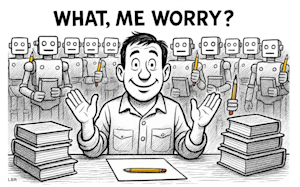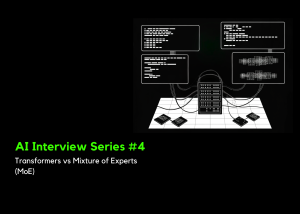How Salesforce’s MINT-1T dataset could disrupt the AI industry

Join our daily and weekly newsletters for the latest updates and exclusive content on industry-leading AI coverage. Learn More
Salesforce AI Research this week has quietly released MINT-1T, a mammoth open-source dataset containing one trillion text tokens and 3.4 billion images. This multimodal interleaved dataset, which combines text and images in a format mimicking real-world documents, dwarfs previous publicly available datasets by a factor of ten.
The sheer scale of MINT-1T matters tremendously in the AI world, particularly for advancing multimodal learning — a frontier where machines aim to understand both text and images in tandem, much like humans do.
“Multimodal interleaved datasets featuring free-form interleaved sequences of images and text are crucial for training frontier large multimodal models,” the researchers explain in their paper published on arXiv. They add, “Despite the rapid progression of open-source LMMs [large multimodal models], there remains a pronounced scarcity of large-scale, diverse open-source multimodal interleaved datasets.”
Massive AI dataset: Bridging the gap in machine learning
MINT-1T stands out not just for its size, but also for its diversity. It draws from a wide range of sources, including web pages and scientific papers, giving AI models a broad view of human knowledge. This variety is key to developing AI systems that can work across different fields and tasks.
The release of MINT-1T breaks down barriers in AI research. By making this huge dataset public, Salesforce has changed the power balance in AI development. Now, small labs and individual researchers have access to data that rivals that of big tech companies. This could spark new ideas across the AI field.
Salesforce’s move fits with a growing trend toward openness in AI research. But it also raises important questions about the future of AI. Who will guide its development? As more people gain the tools to push AI forward, issues of ethics and responsibility become even more pressing.
Ethical dilemmas: Navigating the challenges of ‘Big Data’ in AI
While larger datasets have historically yielded more capable AI models, the unprecedented scale of MINT-1T brings ethical considerations to the forefront.
The sheer volume of data raises complex questions about privacy, consent, and the potential for amplifying biases present in the source material. As datasets grow, so too does the risk of inadvertently encoding societal prejudices or misinformation into AI systems.
Moreover, the emphasis on quantity must be balanced with a focus on quality and ethical sourcing of data. The AI community faces the challenge of developing robust frameworks for data curation and model training that prioritize fairness, transparency, and accountability.
As datasets continue to expand, these ethical considerations will only become more pressing, requiring ongoing dialogue between researchers, ethicists, policymakers, and the public.
The future of AI: Balancing innovation and responsibility
The release of MINT-1T could accelerate progress in several key areas of AI. Training on diverse, multimodal data could enable AI to better understand and respond to human queries involving both text and images, leading to more sophisticated and context-aware AI assistants.
In the realm of computer vision, the vast image data could spur breakthroughs in object recognition, scene understanding, and even autonomous navigation.
Perhaps most intriguingly, AI models might develop enhanced capabilities in cross-modal reasoning, answering questions about images or generating visual content based on textual descriptions with unprecedented accuracy.
However, this path forward is not without its challenges. As AI systems become more powerful and influential, the stakes for getting things right increase dramatically. The AI community must grapple with issues of bias, interpretability, and robustness. There’s a pressing need to develop AI systems that are not just powerful, but also reliable, fair, and aligned with human values.
As AI continues to evolve, datasets like MINT-1T serve as both a catalyst for innovation and a mirror reflecting our collective knowledge. The decisions researchers and developers make in using this tool will shape the future of artificial intelligence and, by extension, our increasingly AI-driven world.
The release of Salesforce’s MINT-1T dataset opens up AI research to everyone, not just tech giants. This vast pool of information could spark major breakthroughs, but it also raises thorny questions about privacy and fairness.
As scientists dig into this treasure trove, they’re doing more than improving algorithms—they’re deciding what values our AI will have. In this new world of abundant data, teaching machines to think responsibly matters more than ever.











